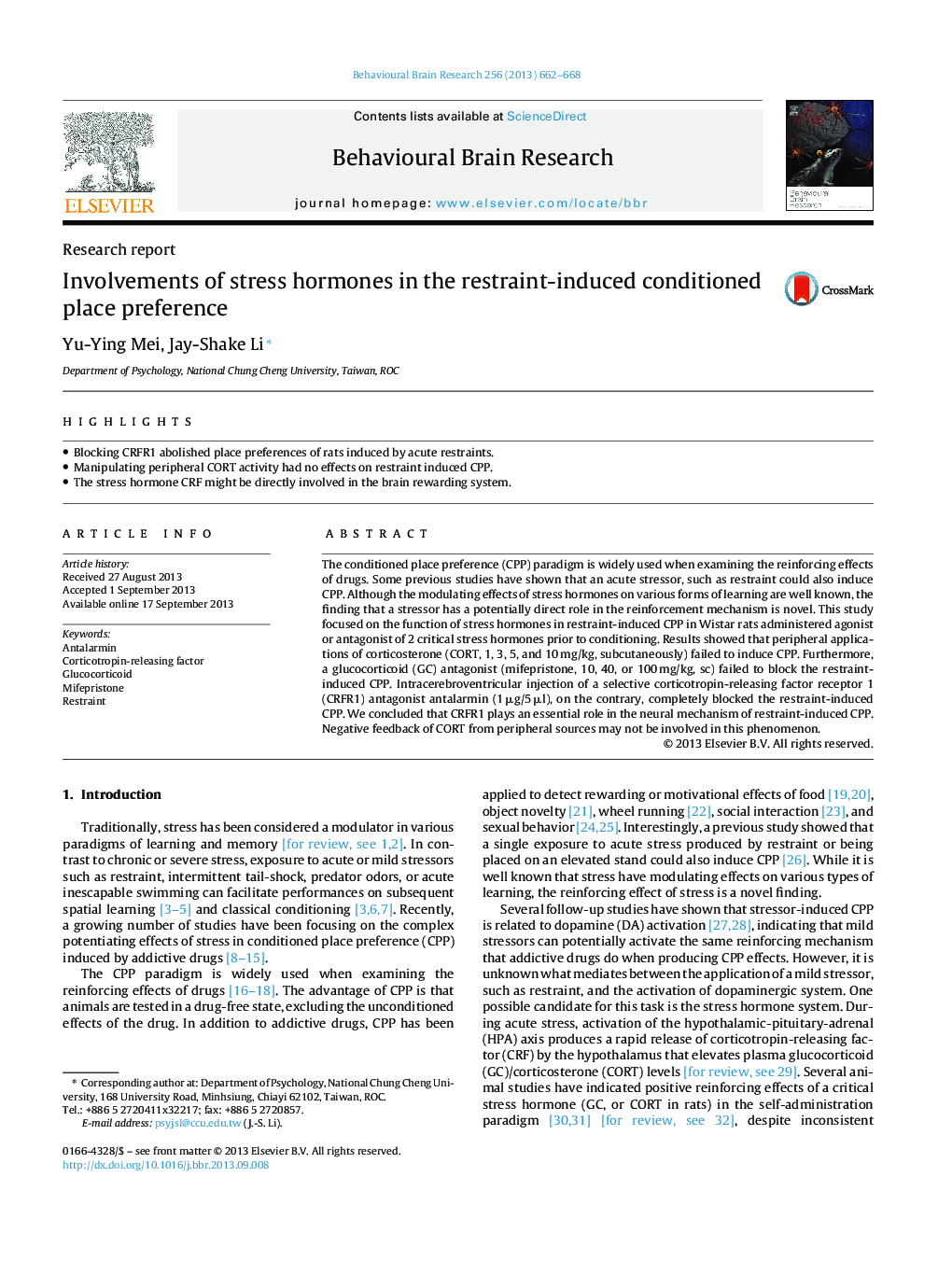| کد مقاله | کد نشریه | سال انتشار | مقاله انگلیسی | نسخه تمام متن |
|---|---|---|---|---|
| 6258915 | 1612976 | 2013 | 7 صفحه PDF | دانلود رایگان |
- Blocking CRFR1 abolished place preferences of rats induced by acute restraints.
- Manipulating peripheral CORT activity had no effects on restraint induced CPP.
- The stress hormone CRF might be directly involved in the brain rewarding system.
The conditioned place preference (CPP) paradigm is widely used when examining the reinforcing effects of drugs. Some previous studies have shown that an acute stressor, such as restraint could also induce CPP. Although the modulating effects of stress hormones on various forms of learning are well known, the finding that a stressor has a potentially direct role in the reinforcement mechanism is novel. This study focused on the function of stress hormones in restraint-induced CPP in Wistar rats administered agonist or antagonist of 2 critical stress hormones prior to conditioning. Results showed that peripheral applications of corticosterone (CORT, 1, 3, 5, and 10 mg/kg, subcutaneously) failed to induce CPP. Furthermore, a glucocorticoid (GC) antagonist (mifepristone, 10, 40, or 100 mg/kg, sc) failed to block the restraint-induced CPP. Intracerebroventricular injection of a selective corticotropin-releasing factor receptor 1 (CRFR1) antagonist antalarmin (1 μg/5 μl), on the contrary, completely blocked the restraint-induced CPP. We concluded that CRFR1 plays an essential role in the neural mechanism of restraint-induced CPP. Negative feedback of CORT from peripheral sources may not be involved in this phenomenon.
Journal: Behavioural Brain Research - Volume 256, 1 November 2013, Pages 662-668
